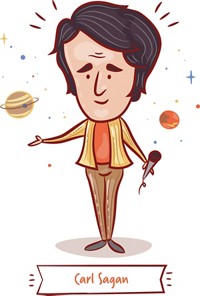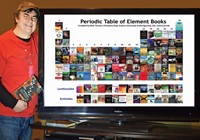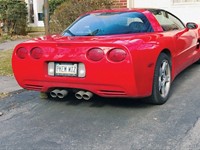Advertisement
Grab your lab coat. Let's get started
Welcome!
Welcome!
Create an account below to get 6 C&EN articles per month, receive newsletters and more - all free.
It seems this is your first time logging in online. Please enter the following information to continue.
As an ACS member you automatically get access to this site. All we need is few more details to create your reading experience.
Not you? Sign in with a different account.
Not you? Sign in with a different account.
ERROR 1
ERROR 1
ERROR 2
ERROR 2
ERROR 2
ERROR 2
ERROR 2
Password and Confirm password must match.
If you have an ACS member number, please enter it here so we can link this account to your membership. (optional)
ERROR 2
ACS values your privacy. By submitting your information, you are gaining access to C&EN and subscribing to our weekly newsletter. We use the information you provide to make your reading experience better, and we will never sell your data to third party members.
Education
Newscripts
It's tough to be Isaac Newton, even now, Label them 'Wacky', New spin on chemistry
April 3, 2006
| A version of this story appeared in
Volume 84, Issue 14
It's tough to be Isaac Newton, even now
Toward the end of 2004, Ross MacFarlane, an assistant archivist with the Royal Society in London, was trolling through items in a dozen of the 22 volumes in the society's Miscellaneous Manuscripts collection. Amidst this "chaotic profusion," writes historian John T. Young of Imperial College (Notes Rec. R. Soc. 2006, 60, 25), MacFarlane spotted what turned out to be a long-lost 16-folio manuscript written in the hand of Sir Isaac Newton.
Now catalogued as MM/6/5, most of the manuscript contains straightforward, studentlike notes in Latin on the works and writings of French alchemist Pierre Jean Fabre and others. But some of the manuscript is written in English and may reflect Newton's own views on alchemy, which MacFarlane notes would be "an extremely rare occurrence."
Newton's papers are rife with alchemical writings, so the content of MM/6/5 is quite in character. Historians have long described Newton as as much a part of the founding generations of science as the final generations of magicians.
Among alchemists of his day, Newton didn't stand out for his originality, and the same holds for MM/6/5, Young indicates with a hint of a disdainful headmaster's voice. "Like almost all Newton's alchemical papers, the document is largely, if not wholly, derivative," says Young, who was invited to be the first to inspect the manuscript.
Even so, Young hopes that as word of the find diffuses, a graduate student somewhere might be seduced into adopting the document as the basis for a Ph.D. thesis. A full analysis of the manuscript, and identifying in it any original alchemical thoughts that Newton might claim, would require cross-checking every one of the hundreds of specific references within the document with the referenced publications.
Such a task might be easier than one would think, Young points out, because "Newton had no compunction about turning corners down or up, not just to mark pages but to make the folded corner point directly to particular words or passages, or about filling margins and flyleaves with his own annotation."
With additional sleuthing, Young and MacFarlane ascertained that the bookseller Francis Edwards acquired MM/6/5 as Lot 22 for £15 in a Sotheby's auction on July 13, 1936. The Royal Society purchased the document from Edwards on March 23, 1939, for £23,8s only to bury it in the miscellaneous pile for the next 75 years.
Label them 'Wacky'
The verdict is in. the Michigan Lawsuit Abuse Watch (M-LAW) has named the top winners in its ninth annual "Wacky Warning Label Contest." M-LAW is a grassroots organization that serves as a public watchdog over court systems in an attempt to combat lawsuit abuse. Its goal is to increase awareness of how frivolous lawsuits are hurting the U.S. and creating the need for nonsensical warnings on everyday products.
This year's champion, found by Tom Brunelle of Holland, Mich., goes to a heat gun and paint remover that produces temperatures of 1,000 oF and warns users, "Do not use this tool as a hair dryer."
The other winners, selected from hundreds of entries, include a label on a kitchen knife that warns, "Never try to catch a falling knife," and a cocktail napkin that shows a map of the waterways around Hilton Head, S.C., printed with, "Caution: Not to be used for navigation." The top winner received $500 and, fittingly, a copy of the book "The Death of Common Sense," by Philip K. Howard.
New spin on chemistry
Triple axels, quadruple toe loops,flying camels, and ... chemistry? When not on the ice or standing on podiums, two world-class figure skaters had been pursuing chemistry-related degrees.
2005 and 2006 world champion and 2006 Olympic silver medalist Stéphane Lambiel received his "maturité" diploma in biology and chemistry in June 2004. He has decided to postpone university studies to focus on figure skating.
Jeffrey Buttle, 2005 world silver medalist and 2006 Olympic bronze medalist, was studying chemical engineering part-time at the University of Toronto until the fall of 2004, when he decided to focus on skating full-time until after the Olympics.
This week's column was written by Ivan Amato and Stephen Trzaska. Please send comments and suggestions to newscripts@acs.org.






Join the conversation
Contact the reporter
Submit a Letter to the Editor for publication
Engage with us on Twitter